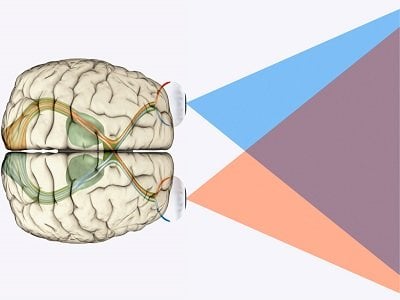A new theory explains how critical periods are triggered during development of the nervous system.
Experiments performed in the 1960s showed that rearing young animals with one eye closed dramatically altered brain development such that the parts of the visual cortex that would normally process information from the closed eye instead process information from the open eye. These effects can be induced only within a specific period of time—a ‘critical’ period during which the developing nervous system is particularly sensitive to its environment.
Subsequent work has shown that the onset of the critical period in the primary visual cortex requires the maturation of circuits containing neurons that synthesize and release an inhibitory neurotransmitter called gamma-aminobutyric acid (GABA). Now, Taro Toyoizumi and colleagues from the RIKEN Brain Science Institute have presented a theory that explains how this inhibition triggers the critical period1.
The theory is based on a computer model of the primary visual cortex containing neurons that receive and process information from the eyes. The model incorporates spontaneous and visually evoked neuronal activity as reported in earlier studies. The simulation also incorporates an activity-dependent form of synaptic plasticity—the process by which connections between neurons are strengthened or weakened in response to neuronal activity.

During early development, spontaneous activity accounts for the majority of activity in the primary visual cortex. With time, however, spontaneous neuronal activity decreases whereas activity evoked by visual experiences increases. The new theory states that the critical period is triggered by the maturation of inhibitory neuronal circuitry, which suppresses the spontaneous activity in the primary visual cortex relative to the activity driven by incoming visual information.
The researchers turned to mice to find evidence to support the theory. Using electrodes to record primary visual cortex activity in freely moving mice, they showed as predicted by theory that the anti-anxiety drug diazepam, which enhances inhibitory activity, lowered the ratio of spontaneous to visual activity in mutant mice with weak inhibition—those lacking the gene encoding glutamic acid decarboxylase-65, an enzyme for synthesizing GABA. Such mice are known not to enter the critical period even in adulthood, but can be induced to do so by administration of diazepam.
Importantly, the theory explains distinct experience-dependent plasticity that takes place before the onset of the critical period, which has been observed in experiments but not explained by other theories. “In the future,” says Toyoizumi, “it would be useful to be able to control developmental plasticity stages by manipulating spontaneous activity in specific brain areas, which could have therapeutic applications.”
Notes about this neurodevelopment and neuroscience research
Contact: Taro Toyoizumi – RIKEN Brain Science Institute
Source: RIKEN Brain Science Institute press release
Image Source: The image is credited to Dorling Kindersley RF/Thinkstock and is adapted from the RIKEN press release.
Original Research: Abstract for “A theory of the transition to critical period plasticity: Inhibition selectively suppresses spontaneous activity” by Toyoizumi, T., Miyamoto, H., Yazaki-Sugiyama, Y., Atapour, N., Hensch, T. K. and Miller, K. D in Neuron. Published online October 2 2013 doi:10.1016/j.neuron.2013.07.022






